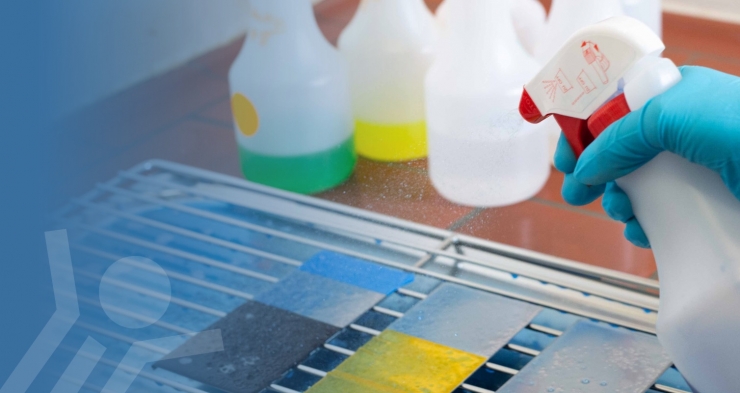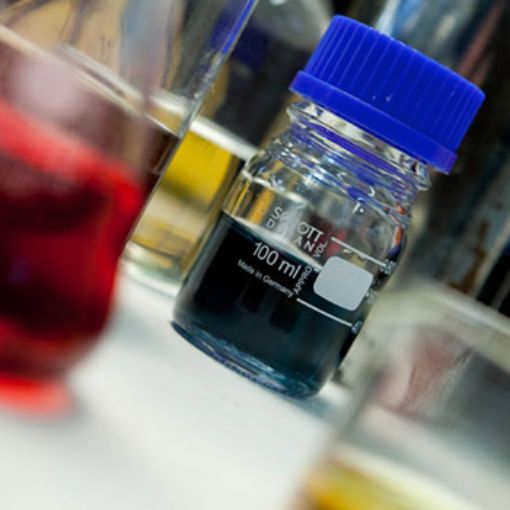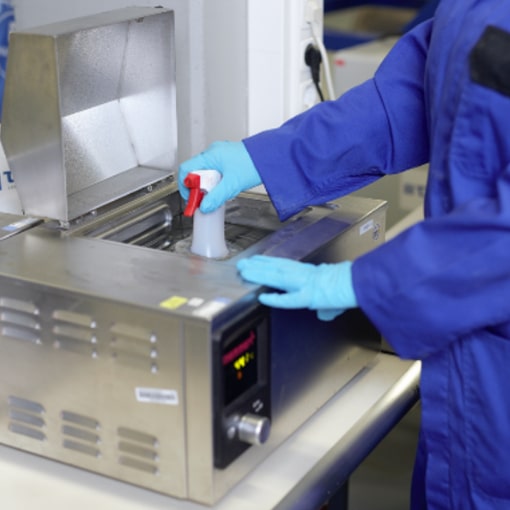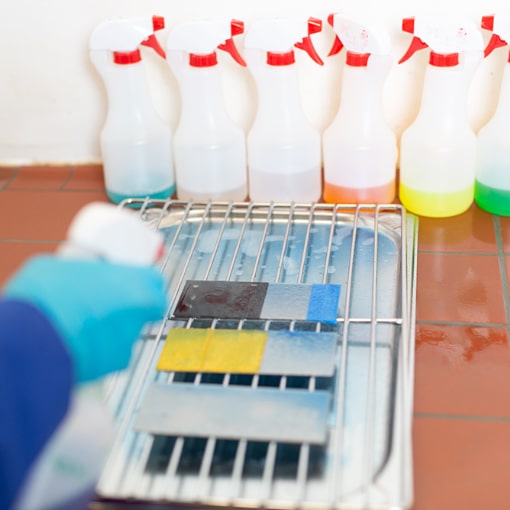Chemical resistance testing
We check whether your products are resistant to the chemicals and liquids that will affect them later in the product life cycle.
Functional and optical surfaces and materials must not change during later usage through liquids that typically exist in their area of application.
An example: In the cabin of a plane, the liquid detergents and insecticides used are not to discolor or embrittle the decorative materials, and a cup of coffee must not leave a permanent coffee rim.
We can prove this by employing the Fluid Susceptibility Test according to RTCA/DO-160. Due to our extensive project experience in this area, we have the necessary test fluids usually required in the aviation industry on hand or available at short notice. These include the whole spectrum of technical fluids, from de-icing and cleaning fluids to oils, fuels, insecticides, disinfectants, extinguishing agents, drinks, and urine substitutes.
The evaluation process may include a visual inspection, color measurements, etc. Treo offers the following additional evaluation methods specifically for coatings, paints and varnishes: cross-cut test (DIN EN ISO 2409), bend test (DIN EN ISO 1519) or other methods according to customer requirements.
The standards and procedures in this area include the following:
- RTCA DO-160 Fluids Susceptibility
- ISO 16750-5 Chemical Loads
- DIN EN 60068-2-74 Test Xc: Fluid contamination
- MIL-STD-810 Contamination by Fluids




Head of Environmental
Simulation Laboratory
Till Schwermer
Dr.-Ing.
Testing? Treo
Material testing
Testing areas:



